Abstract 7/2022
Table of content
Aleksander Sobota, Mariusz Gruszka, Dorota Gawenda – Method of bus lines classification on the example of lines organised by the Metropolitan Transport Authority in Katowice
Sylwia Sopata, Zofia Bryniarska – Analysis of the operation of selected interchange nodes in Nowy Sącz based on passenger opinions – Part II
Adrian Baran, Zofia Bryniarska – Indicator evaluation of interchange nodes using the AMPTI methodology on the example of Rondo Grunwaldzkie and Podgórze SKA interchanges in Kraków – Parth II
Rafał Woźniak – Modern information technology – support in public transport on the example of the city of Stalowa Wola
Abstracts
Aleksander Sobota, Mariusz Gruszka, Dorota Gawenda
Method of bus lines classification on the example of lines organised by the Metropolitan Transport Authority in Katowice
Abstract: The problem of optimising public transport (PT) covers many dimensions, such as the transport offer, tariffs or infrastructure used for service of passengers and means of transport [1, 2]. Its overall objective is to maximise efficiency while minimising costs. In relation to the transport offer, optimisation measures may concern changes in: the number of public transport lines, the routing of lines, the number of courses per day, per week and per month, and the departure times from stops [3]. The implementation of this process may require the classification of lines, as optimisation is not realised in a random manner. Therefore, a method for classifying bus lines was developed based on the mechanisms of multi-criteria decision support. At the same time, it takes into account only supply side aspects of the transport system [4, 5, 6, 7] such as: the operation time of the line, the number of courses, distances between stops, the spatial extent of the line and exploitation work. Consideration of the demand-side dimension of public transport system operation will be the subject of further research work. The method in question is considered in the article. Moreover, the publication presents a case study of the method for lines running in the area where the organizer of public transport is the Metropolitan Transport Authority in Katowice. The method presented in the article is one of the elements of a wider study consisting in the development of tools for designers and planners who design the changes to the transport offer.
Key words: public transport, metropolitan collective transport, lines classification, bus lines.
Sylwia Sopata, Zofia Bryniarska
Analysis of the operation of selected interchange nodes in Nowy Sącz based on passenger opinions – Part II
Abstract: The aim of the thesis is to analyze the functioning of two interchanges in the city of Nowy Sacz: MDA S.A. interchange and MPK interchange, based on passengers’ opinions. Part I of the article (TMiR No 3/2022) presents an interchange node in theoretical terms, focusing on defining its function and purpose of construction, as well as their classification. The principles of the construction of the interchange were also presented and the elements of its equipment were specified. The next point of work was to characterize both nodes due to their location, type of public transport, infrastructure and road layout, traffic control, location of parking spaces, availability of information for passengers and identification of problems existing in them. Part II presents the results of a marketing study evaluating the two hubs. To conduct the study, a survey form containing 16 questions was used, in which the respondents provided answers to the interchange of their choice, which they use most often. 516 people responded, electronically or by completing a questionnaire in person at the junction. The study showed that the plan for the placement of the node elements is one of the missing links in both interchanges, which reduces passenger satisfaction with the aspect of passenger information transmission. Analyzing the collected answers, there was also a problem with connecting various communication lines with each other, as well as a problem regarding the availability and adaptation of elements of the interchange at the MDA S.A. Station. On the basis of the conclusions, the possibilities of changes were proposed that could be applied in interchange nodes in order to increase the accessibility and attractiveness of public transport and the same interchange nodes in the city.
Key words: interchange node, means of transport, public transport.
Adrian Baran, Zofia Bryniarska
Indicator evaluation of interchange nodes using the AMPTI methodology on the example of Rondo Grunwaldzkie and Podgórze SKA interchanges in Kraków – Parth II
Abstract: Interchange node is a place equipped with appropriate infrastructure enabling a change of means of transport. In a large city such as Kraków, it is practically impossible to travel by public transport without interchanges. Therefore, they are very important places due to the operating in the entire transport system. Part I (TMiR No. 3/2022) has presented the methodology of the AMPTI multi-faceted indicator assessment. The current version includes 10 quantitative indicators that allow for an extensive analysis of nodes. This methodology was used to evaluate two interchange nodes operating in Kraków, ie Rondo Grunwaldzkie and Podgórze SKA. The first integrates bus and tram transport, and the second integrates bus, tram and rail transport. Part I has also presented detailed characteristics of both nodes. In addition to the audit of interchanges (necessary for the index assessment), the following was also carried out: measurement of the number of passengers getting on and off at interchanges. Part II (TMiR No. 4/2022) presents the results of a survey of passengers using the interchange to assess the convenience of the transition between the various stops at the interchange and the level of passenger information available and the transfer connections that are made. The results of the AMPTI evaluation of both interchanges are also presented. The test results have been compared for both nodes in order to check how the node equipped with bus, tram and rail communication operates in comparison with the node integrating only the bus and tram transport.
Key words: interchanges nodes, AMPTI indicator evaluation, public transport.
Rafał Woźniak
Modern information technology – support in public transport on the example of the city of Stalowa Wola
Abstract: The article presents ITS solutions in urban public transport introduced in 2018-2019 in Stalowa Wola. The passenger information system, electronic ticketing system and traffic surveillance system were discussed. The solutions in operation before the introduction of modern ITS systems, the assumed goals after the implementation of the new solutions and the effects of their introduction were described. The benefits achieved after the introduction of modern technologies that affect the quality of passenger service and bus fleet management are reviewed. The article points out problems that arise during the operation of IT systems and the devices from which the systems are constructed.
Key words: public transport, ITS, information technology

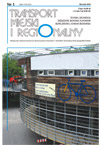 SITK RP
SITK RP 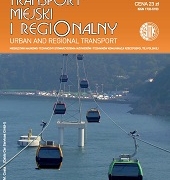
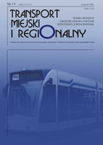 SITK RP
SITK RP 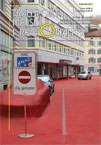 SITK RP
SITK RP 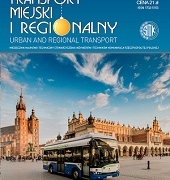
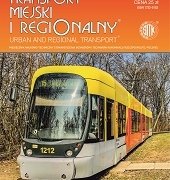

 Wydawnictwa SITK RP
Wydawnictwa SITK RP SITK RP
SITK RP